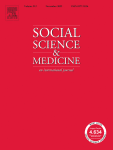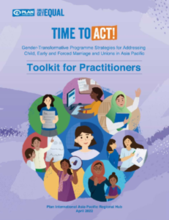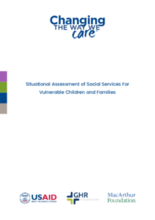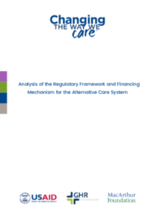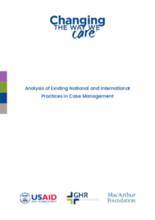Displaying 31 - 40 of 461
Most residential children's social care services in England, including children's homes, are operated by for-profit companies, but the implications of this development are not well understood. This paper aims to address this gap by undertaking the first longitudinal and comprehensive evaluation of the associations between for-profit outsourcing and quality of service provision among English local authorities and children's homes.
This paper brings together data, evaluations and practical experiences generated over the course of the pandemic to determine the impact of COVID-19 on cash transfers.
This toolkit developed by Plan International Asia-Pacific Regional Hub serves as a practical compendium of programming guidance for practitioners, and contributes to accelerating efforts to end child, early and forced marriage and unions (CEFMU) by 2030, in line with the Sustainable Development Goals (SDGs).
Social protection is increasingly being used in Eastern and Southern Africa to address economic and social vulnerability. Many governments in the region are also engaged in care reform to prevent family separation, support families to care for children well and provide quality alternative care. The same frontline workers are also often engaged in these two streams of work. This paper provides an outline of the key concepts and processes involved in social protection system strengthening and care reform and makes an argument for encouraging greater synergies between these two systems.
This CELSIS briefing builds on the 2019 briefing, Access to Care Records, which outlined the legislative and policy context in Scotland around care records. This briefing is for all practitioners involved in writing, managing and/or supporting access to care records, and draws on research, campaigning work, and knowledge from organisations and local authorities across Scotland including in social work and information governance teams.
The purpose of the individual assessment of 184 children in six RIs was to collect up-to- date information on the demographics, as well as the social, educational, psychological, and medical status, of children placed in RIs in order to plan their reintegration into their families of origin and/or to prepare them to transition from residential to family care.
The aim of the study is to understand the current situation of social services focused on strengthening families’ capacity to provide a safe, stable, and nurturing environment for children, as well as services for children in need of, or currently in, alternative care and/or in the process of reintegration, in order to be able to formulate recommendations that will contribute to evidence-based decisions for their improvement.
The analysis was carried out in order to develop practical recommendations on improving the regulatory framework and the social services financing mechanism to prevent the separation of children from families and support alternative care mechanisi
The analysis of case management (CM) systems aims to contribute to the development of a CM model that both reflects the latest programmatic, legislative, and methodological developments at national and international levels, and effectively contributes to increasing the quality of services for vulnerable children and families.

